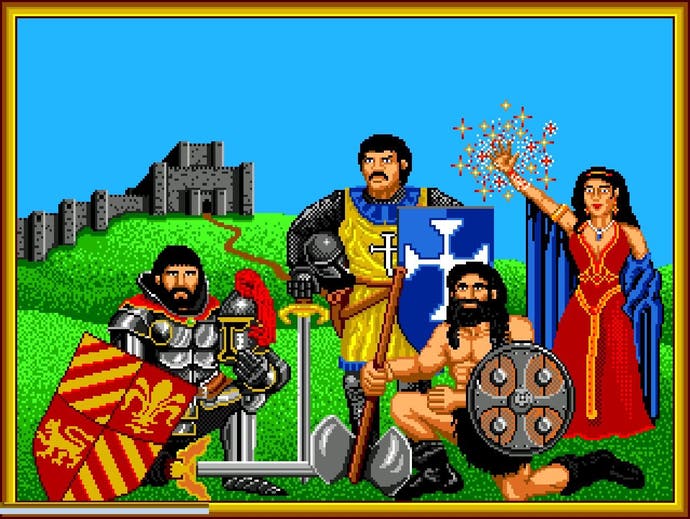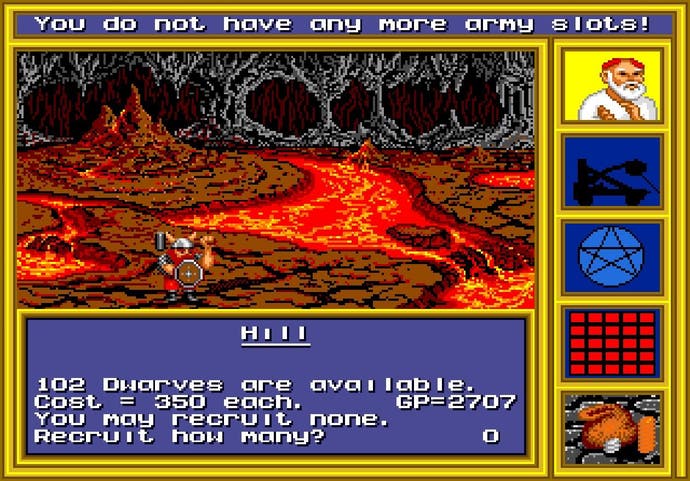Retrospective: King's Bounty
Treasure chess.
I honestly didn't know it was going to be brilliant.
Visiting my local Retro Games Emporium, I was stuffing boxes of N64, Dreamcast and PSX games under my arms and down my trousers when I spotted King's Bounty. For the Mega Drive.
Of course, I've played the recent remake of the game - the utterly splendid King's Bounty: The Legend by Katauri Interactive - but I confess I'd never encountered the original version in 1990. I was too busy fighting crime, or being 12.
It was born as a PC game, but there it was on Mega Drive - the game ported to the console a year later, in '91 - and I was powerless to resist. I fancied finding out if it was still worth struggling with in front of my TV.
Digging out the Mega Drive is always a treat. But I must be honest and say that it's not my own original one. I, brought up on mouse-based computing from the moment the tool was available to the public, never had such a thing. Atari ST led directly to PC. When you were playing Sonic, I was playing its jaundiced second-cousin (the one never invited to parties), Fire And Ice.
My cousin had a Mega Drive. And my friend Paul Pybus - who also had Sky. But neither owned a copy of King's Bounty. Had they, it wouldn't have been exactly the sort of game we'd have sat down to play together. "Quick, go buy 20 more ghosts!"

So I went in blind, beyond the peculiar future-vision of knowing how the remake plays, 20 years later.
You pick one of four classes - Barbarian, Knight, Sorceress or Paladin - and are then immediately commissioned by the King to find the lost Sceptre of Order. To do this you must wander the four continents, taking over castles from various scum and villainy, in order to acquire puzzle pieces to form a map of the sceptre's location.
As you wander (read: slide sideways on a horse across a top-down map, or sail a capsized boat) you encounter gangs of enemies, at which point you enter the game's turn-based combat.
And what a massive pleasure it is. The game's instruction booklet compares it to "chess or checkers", which is a bit like comparing a holiday to "a luxury cruise or fortnight being tortured in the Helmand Province". It's like neither, beyond moving your pieces around on a tiled grid.
Your army, made up of a maximum of five unit types, is limited in volume by your leadership level. You may have 10 cavalry, 50 wolves, 28 trolls, 143 peasants and seven ghosts. Your enemy may have 14 elves, 40 wolves, 62 sprites, 24 ogres and a giant. The depth of the game is figuring out which of your units is best suited to defeating those of the enemy, and manoeuvring your army into place (each unit has a varied number of actions per turn) to ensure the ideal battle.

I especially love the wolves and skellingtons, far more than some of the more powerful recruits from the later continents. In huge numbers, which will become available to you later on, they're a fantastic force. Until you hideously encounter that one enemy type that can take out 60 of them in a single hit. Oh, the mourning.
And it's so involved. Morale plays a key role, and if you have units that dislike each other in the same army, they'll be far less effective. You can garrison units into captured castles, use spells as a key part of both combat and exploration, and see enormous amounts of detail about your character and team.
The structure of the game is really interesting. Rather than simply plodding your way through to the end, you're given a limited number of 'days' in which to complete the major task. Days pass as you move about, much faster when crossing deserts or travelling in your rented boat across the seas. (The Mega Drive port tweaked some of this, making time pass more quickly, and allowing enemy units to move independently of you, engaging you in combat themselves.)
The difficulty levels define how many days you have, with 600 on 'normal'. This lasts a really very long time, many hours. Which was what broke one of my prejudices about the Mega Drive.

